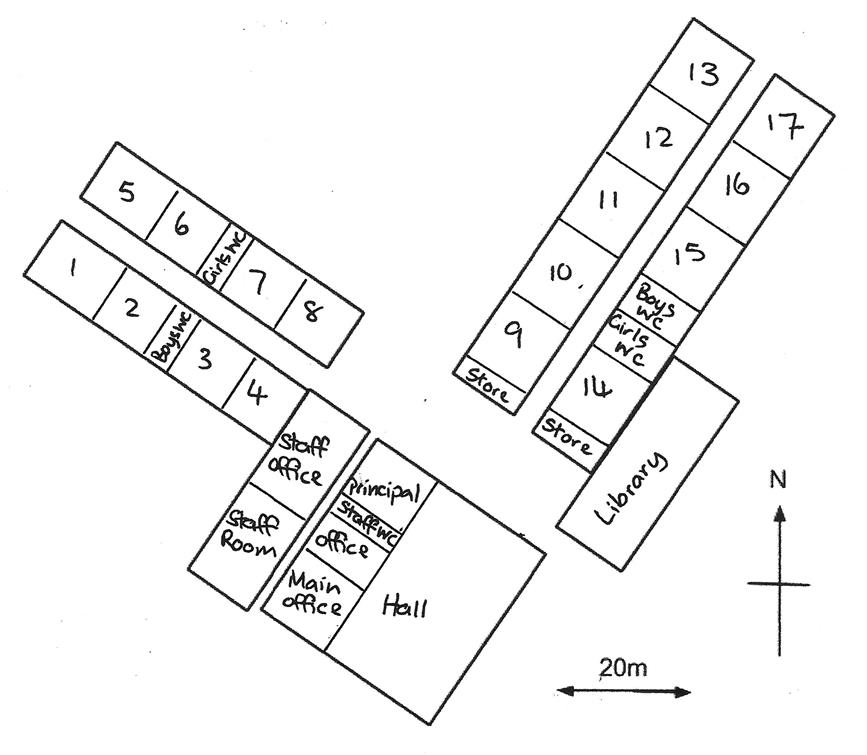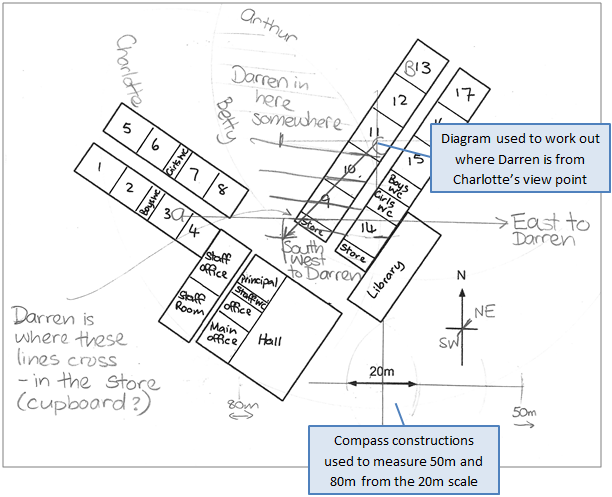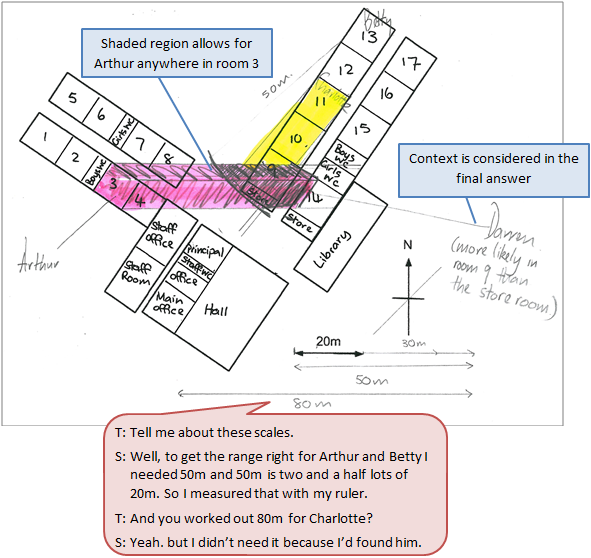Where's the WiFi?
The purpose of this activity is to engage students in using compass directions and compass constructions to solve a location problem.
This activity assumes the students have experience in the following areas:
- Using compass direction to specify travel paths.
- Represent horizontal and vertical displacement as vectors.
- Construct circles and arcs using drawing compasses.
The problem is sufficiently open ended to allow the students freedom of choice in their approach. It may be scaffolded with guidance that leads to a solution, and/or the students might be given the opportunity to solve the problem independently.
The example responses at the end of the resource give an indication of the kind of response to expect from students who approach the problem in particular ways.
Arthur, Betty and Charlotte are all at school, in different rooms, successfully using their friend Darren’s WiFi hotspot from his phone.
Arthur and Betty can connect within 50m of Darren’s phone, but Charlotte’s phone can manage 80m.
The map of the school, below, shows where Arthur, Betty and Charlotte are at the moment.

Darren is due East of Arthur who is in room 3.
Betty is in room 13 and Charlotte, in room 11 is Northeast of Darren.
Where is Darren?
The following prompts illustrate how this activity can be structured around the phases of the Mathematics Investigation Cycle.
Make sense
Introduce the problem. Allow students time to read it and discuss in pairs or small groups.
- Do I understand the situation and the words? (Students may need support to understand the context of a WiFi hotspot, and the range of that WiFi.)
- What is the important information? (The conditions of how far Arthur, Betty and Charlote are from Darren’s phone, and the direction Darren is from Arthur.) What information is known? (Arthur is in Room 3.)
- Where else in my life/the world can I see this happen? (Students may have solved problems involving direction and position before.)
- What will my solution look like? (The solution will be the location of Darren on the map with justification for that location.)
Plan approach
Discuss ideas about how to solve the problem. Emphasise that, in the planning phase, you want students to say how they would solve the problem, not to actually solve it.
- What would be a sensible first strategy? What information should I work with first?
- What are the maths skills I need to work this out?
- How could I show this problem using the map?
- Do I anticipate how I will know where Darren is? (Student should consider that there will be a convergence of possible area from processing all the clues.)
- What tools (digital or physical) could help my investigation? (Use of a drawing compass to create arcs of possible locations, from the distance clues, will be important.)
Take action
Allow students time to work through their strategy and find a solution to the problem.
- Have I shown my workings in a step-by-step way by recording on the map?
- How will I systematically account for all the information that I have?
- Is there another possible answer or way to solve it? Would the order of using the information make a difference to the result?
- Is my strategy looking fruitful or do I need to try something else?
- How do my results look different to others? Why could this be?
- Does my solution make sense? Does it match all the clues?
- Does my solution answer the question? Have I specified Darren’s location precisely?
Convince yourself and others
Allow students time to check their answers and then either have them pair share with other groups or ask for volunteers to share their solution with the class.
- What is the solution?
- Does my solution match all the given information?
- Is my working clear for someone else to follow?
- How would I convince someone else I am correct?
- Could I have solved the problem in a more efficient way?
- What connections can I see to other situations? What situations would my ideas and strategies work for?
- Is there some mathematics that I need to learn?
Examples of work
Work sample 1
The student uses compass directions and compass constructions to solve a problem.
Click on the image to enlarge it. Click again to close.
Work sample 2
The student uses compass directions and compass constructions to solve a problem within context.

